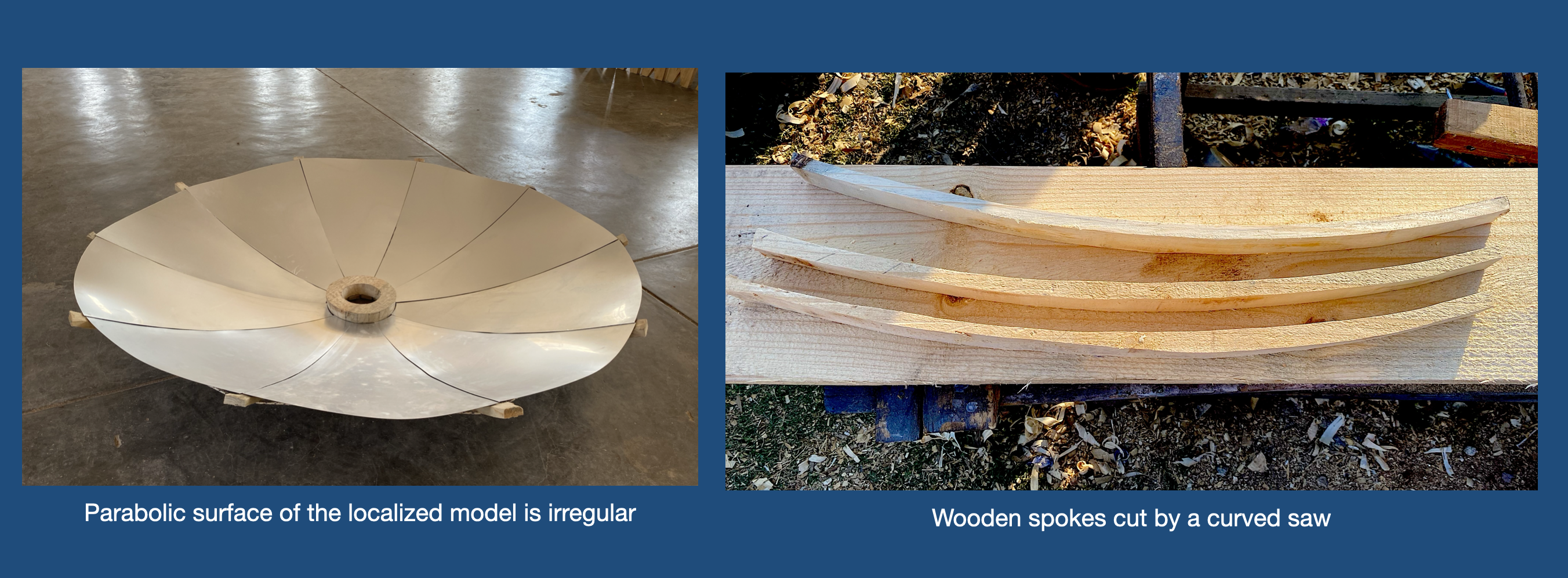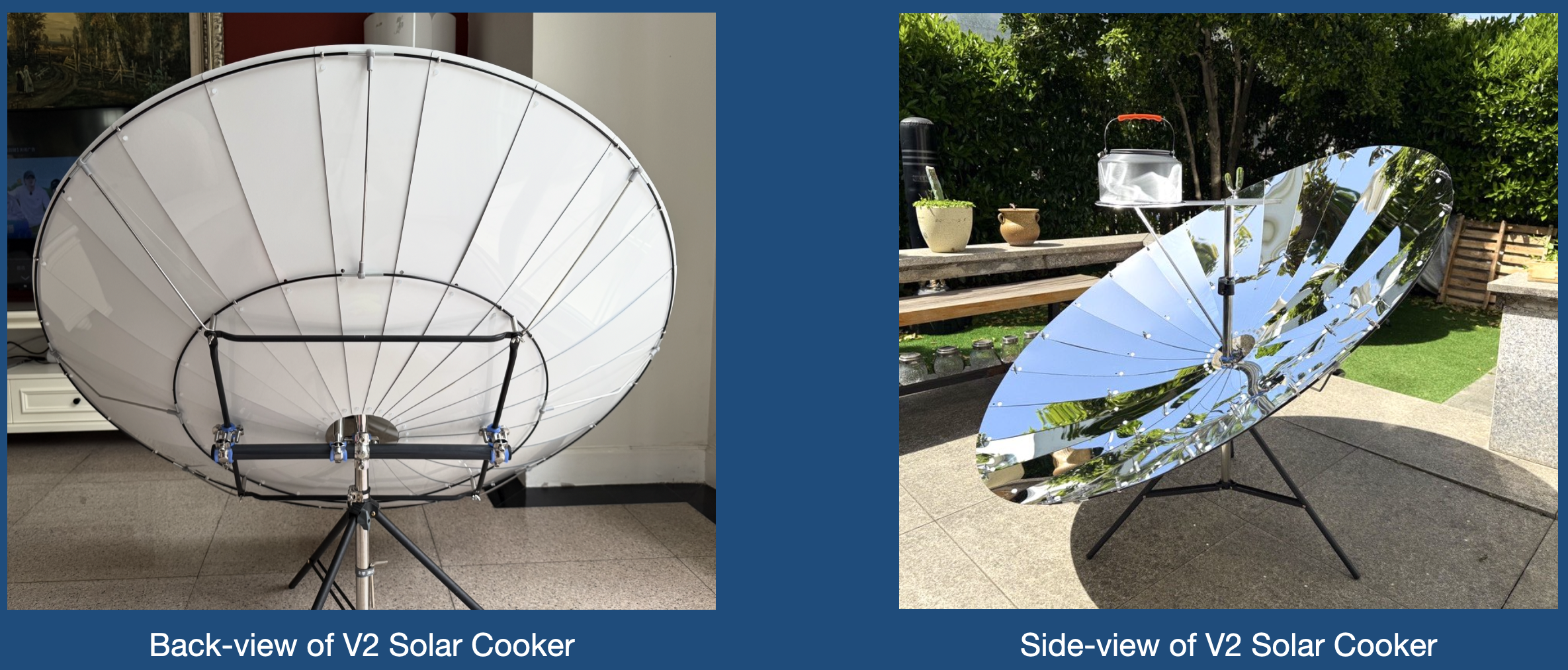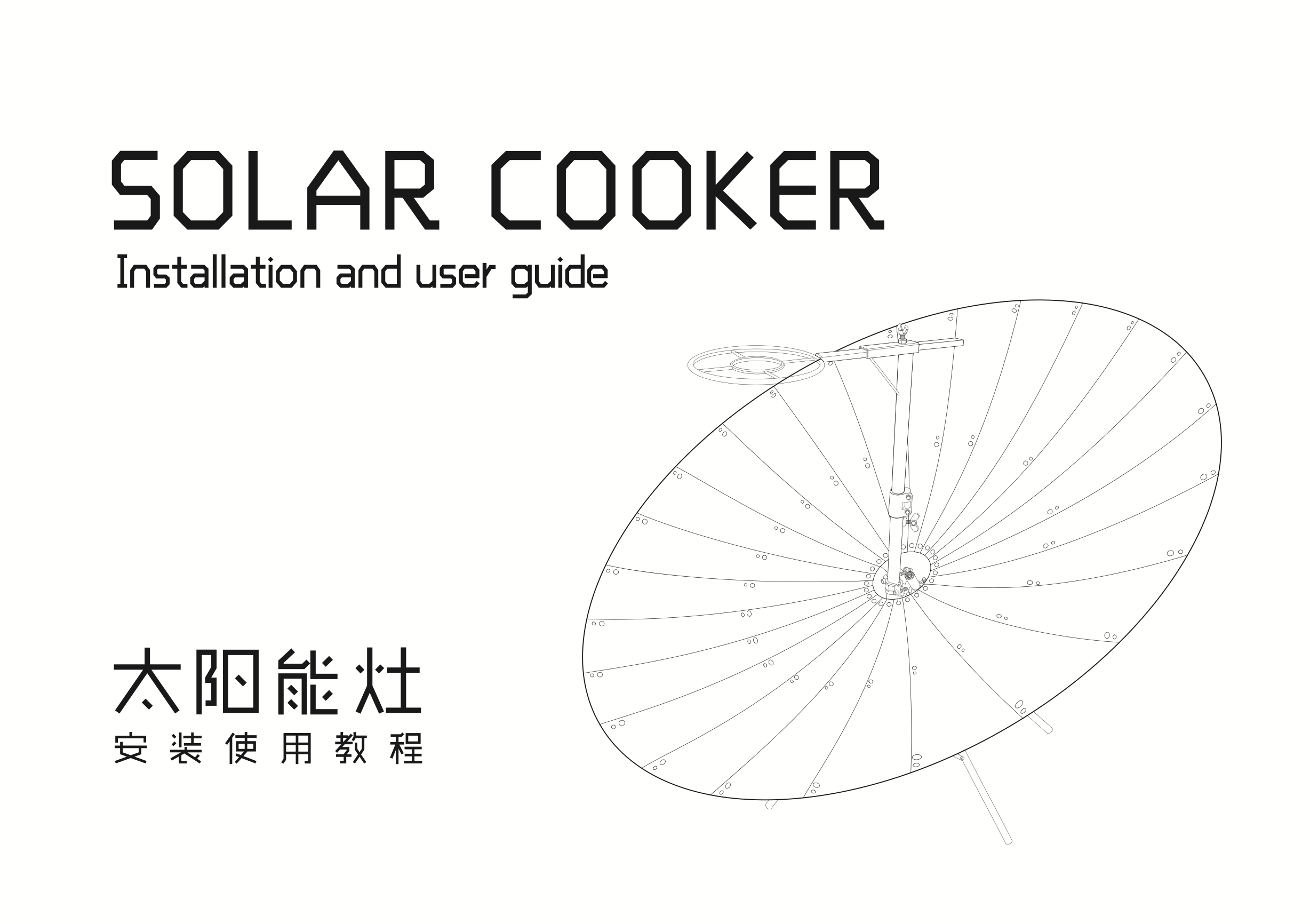Products
The Products page showcases both our latest and legacy solar cooker models, and provides access to user manuals as well as video installation tutorials.
Version 1 Solar Cooker
The R&D Process
A solar cooker operates by using a parabolic surface to reflect and concentrate sunlight at its focal point, thereby achieving heating. The primary focus of solar cooker modification is the frame and the reflective mirror surface. In particular, the frame requires the fabrication of a parabolic support structure.
By using SolidWorks, we divided the rotational parabolic surface into ten equal sections and unfolded the curved surface into a plane to generate the design drawings. These were then sent to a PC mirror manufacturer, who used CNC machining to cut the PC mirror sheets into the corresponding shapes. The cut panels were attached to the parabolic spokes with Velcro, thereby finalizing the surface design scheme.
Next, we installed the modified lightweight stove surface onto the solar cooker frame for testing. The new model not only proved capable of boiling water but also met the requirements for frying eggs, stir-frying dishes, and even grilling. With this, the first phase of the solar cooker’s technical modification was successfully completed.
However, prototype failures shaped the final design: mortise-and-tenon joints were too fragile, and an umbrella-style cooker scattered light once wrinkles formed. Ultimately, we settled on a portable parabolic dish that secures polycarbonate (PC) mirrors to a heat-bent pinewood frame with Velcro.

Reflection
The first trip exposed 3 major issues:
- Zimbabwe’s undeveloped local manufacturing industry is insufficient in producing wooden, parabolic spokes with precision.
- Due to Zimbabwe’s dependence on imports, the material costs become unaffordable.
- The wooden spokes are not mass-producible
- The solar cooker’s heat intensity was too high, causing the local staple, Sadza, to scorch on the bottom of the pan during cooking.

Version 2 Solar Cooker
In the redesign of the solar cooker, the spoke structure of the frame was replaced by a system that capitalized on the flexibility of PC mirrors. By pre-drilling holes along the mirror edges and fastening the panels together with silicone pins and screws, supported by fiberglass rods, the mirrors naturally formed a rotational parabolic surface. This innovation eliminated the accuracy limitations of spokes. To further refine precision, the curved surface was subdivided into 24 segments rather than the original 10, reducing stretching and contraction errors during assembly. Design choices also accounted for Zimbabwean cooking practices, which often rely on low-heat simmering (ie, cooking sadza). Excessively high focal temperatures would be impractical, so the dish diameter was reduced from 1.5 m to 1.2 m.
Rather than localizing production, China’s advanced manufacturing capacity was leveraged to enhance quality and minimize expense. The upgraded model demonstrated the ability to boil one liter of water in ten minutes while offsetting approximately 600 tons of carbon emissions annually. Key improvements included fiberglass replacing wood, collapsible tripods, and mirror tensioning. The final design is 77% lighter, 79% smaller, and significantly cheaper (priced at only 60 USD per unit) than existing commercial alternatives.

Version 3 Solar Cooker
COMING SOON...

